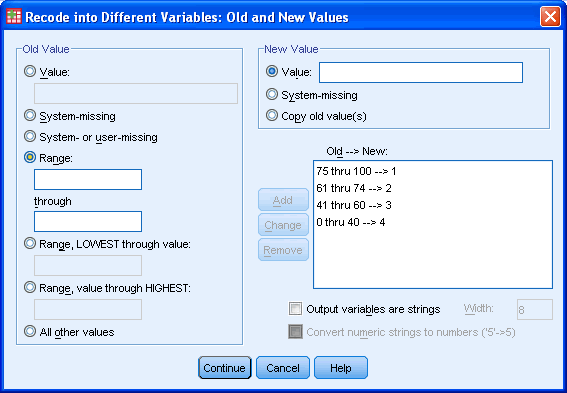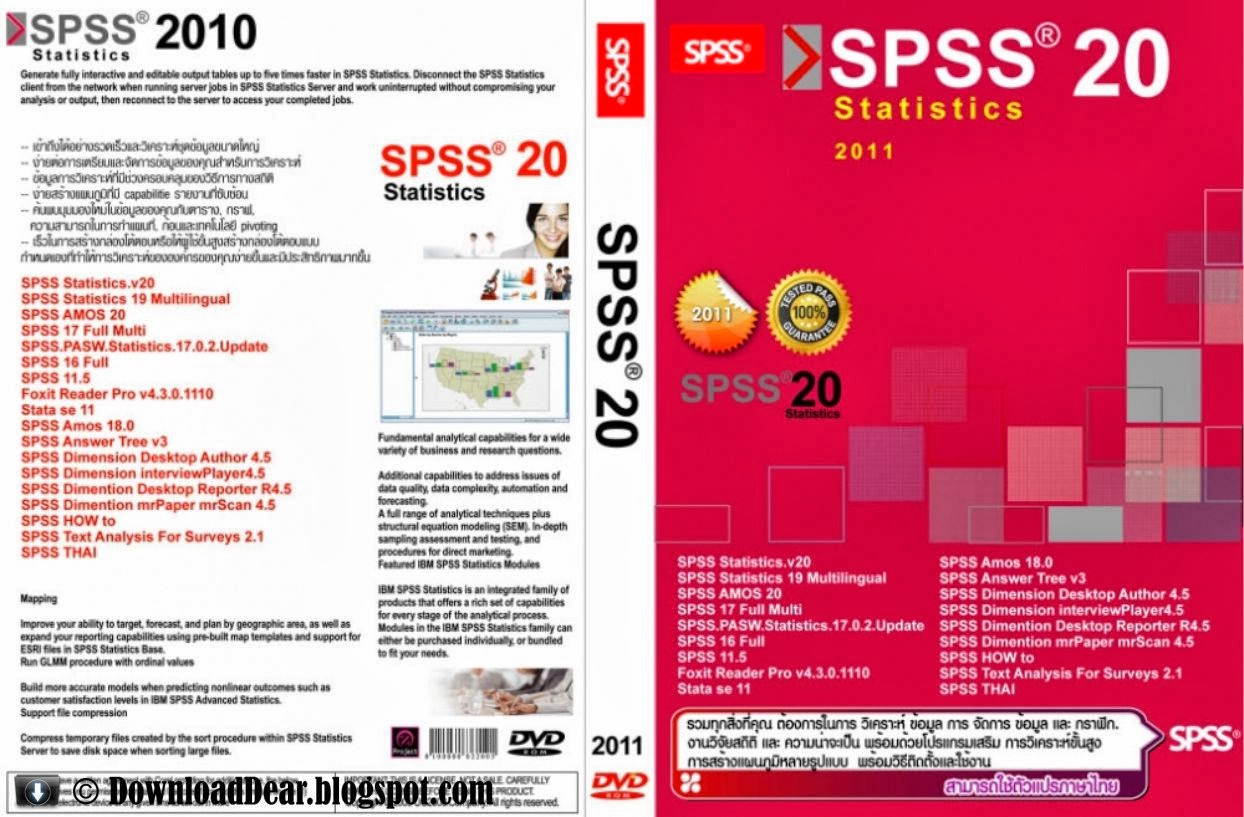

- #Spss code range how to#
- #Spss code range .dll#
- #Spss code range install#
- #Spss code range 64 Bit#
- #Spss code range full#
Descriptive statistics is also known as summary statistics as it summarizes the large data sets. The information about why SPSS is a great choice for performing descriptive statistics is also mention.
#Spss code range how to#
This blog has given every information about how to do descriptive statistics on SPSS. Anyone can easily customize it with few clicks. Therefore, It is completely the choice of the user about what to display and whatnot.
#Spss code range full#
SPSS provides full control over the descriptive statistic. Moreover, anyone can also measure central tendency that consists of mean, median, and mode as the necessary and most popular analysis.įurthermore, Quartile, minimum, maximum, and percentile are also possible as a measure of position. SPSS provides the whole descriptive statistics analysis in numerical form.Īnyone can easily produce a measure of dispersion, i.e., standard error, variance, range, standard variance, kurtosis, and skewness. Even beginners who don’t have any knowledge of coding or statistics can comfortably use SPSS. SPSS is very easy to use for every community. Some of the reasons supporting this argument are as follows. Now, the question is why SPSS is a good choice for performing descriptive statistics. There are several software options available that can produce descriptive statistics. Why is SPSS best for Descriptive Statistics? Lastly, click on ‘OK’, and SPSS will produce the final results. Thirdly, click on ‘Statistics’, tick the ‘ Descriptives‘, and press ‘ Continue‘.Ĥ. Click on the variable and select the blue arrow to insert the targeted variables in the ‘Dependent List’ box.ģ.

After making the necessary changes click on the ‘Data View’ option in the bottom corner of the screen, and this screen will appear. SPSS allows anyone to perform changes here according to his convenience to set up the variables correctly.
#Spss code range .dll#
dll should be saved in the same location as this program.
#Spss code range install#
Run the following commands in your terminal: sudo apt-get install intel-icc8-libs sudo apt-get install libicu32 sudo apt-get install libstdc++5.Installation (tested on Linux Ubuntu 10): Renamed SavDataDictionaryReader into SavHeaderReader.Changed some Reader defaults (verbose=False, returnHeader=False).Removed pesky segfault error when freeing memory.Added support for reading and writing zlib compressed (.zsav) files.(z/Linux, Solaris, HP Linux, IBM AIX (untested though)
#Spss code range 64 Bit#
Added support for 64 bit Windows (tested with Win7) and other OSs.Added support for almost all meta data (missing values, sets, roles, etc.).Added support for writing spss date fields.Added support for slicing, indexing, array slicing + other special methods.It is recommended to download the v21 I/O files (required for writing zlib (.zsav) compressed files).Requires libspssdio.so.1 (LINUX) or libspssdio.dylib (MAC) or spssio32.dll (WINDOWS) plus associated libaries, which can be freely downloaded from:.Check for the latest version (including the libraries!).

Python Program to READ & WRITE Spss system files (.sav) (Linux,Mac or Windows)


 0 kommentar(er)
0 kommentar(er)
